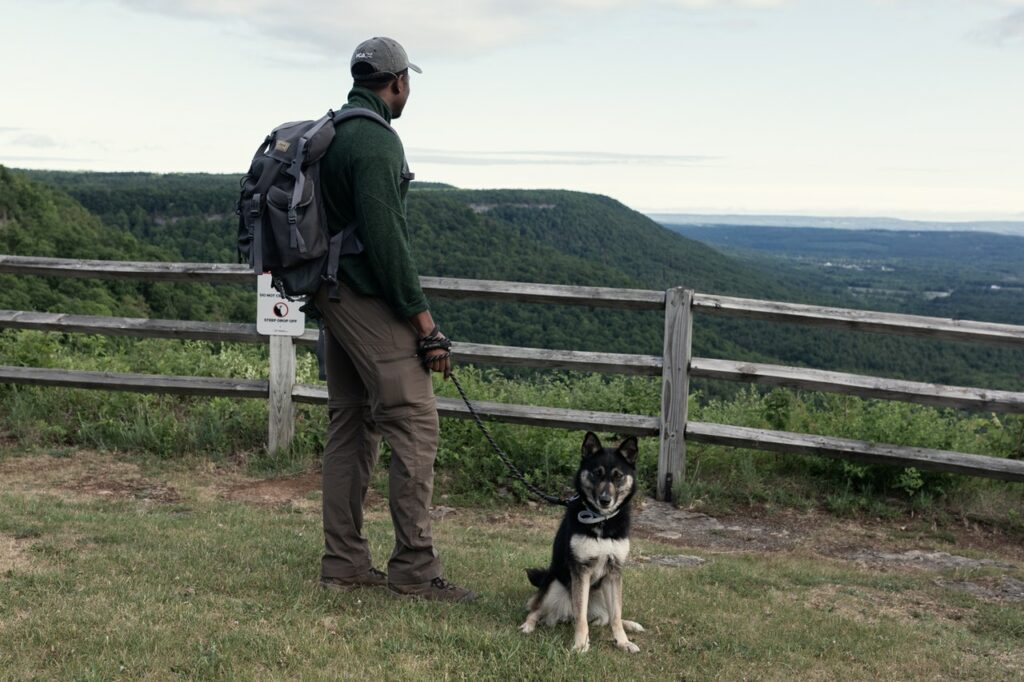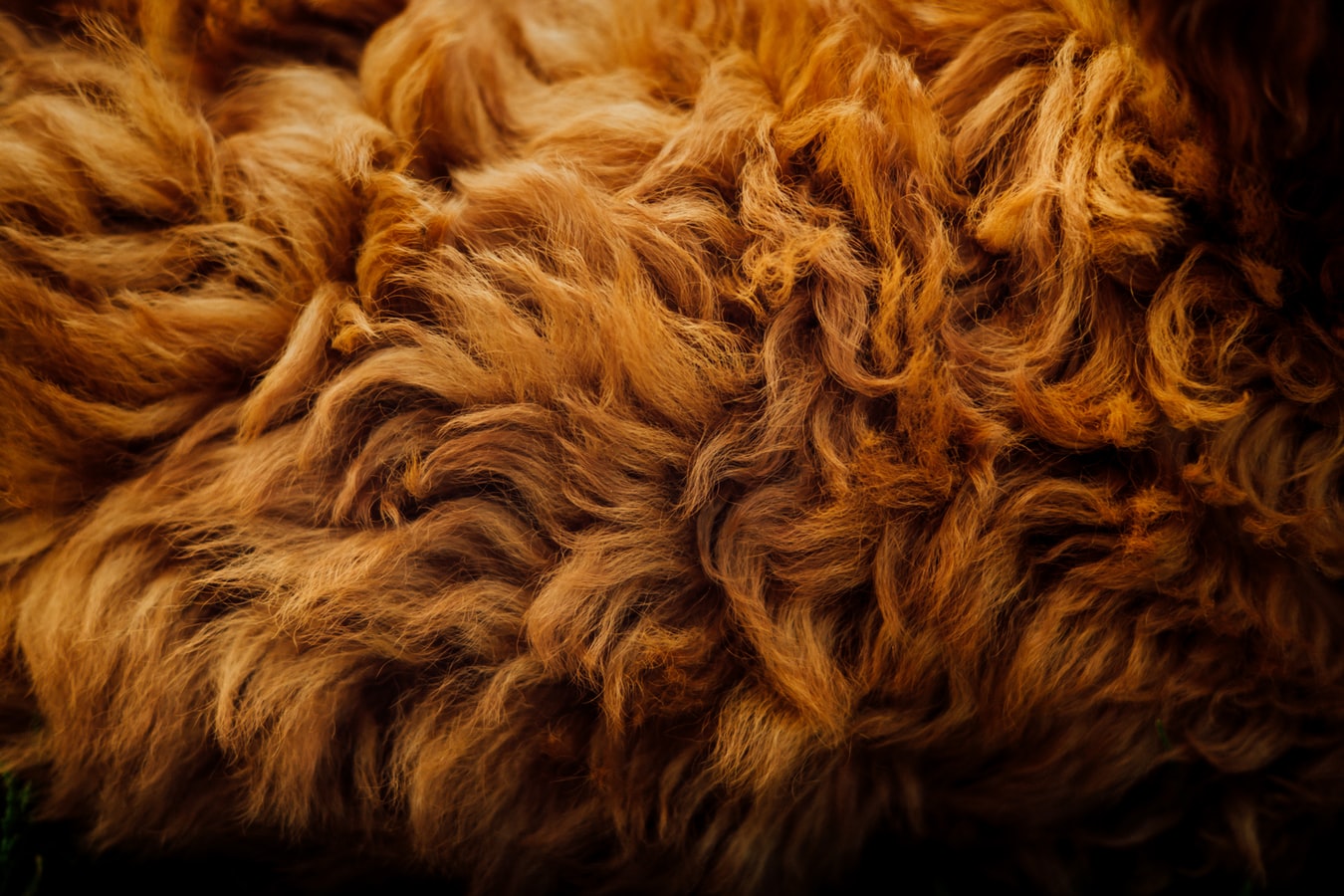Bunny, a curious sheepadoodle, takes a look outside and sees that the weather is perfect for a walk. She struts to her board full of buttons, places her paw on the button labeled “walk” and after some expert negotiation with her owner Alexis Devine, where Bunny presses a button to say “Please” and counters Alexis's refusal with a simple, “Why?” Bunny gets her walk.
More than 6 million people follow Bunny the “talking” dog on TikTok and watch in amazement as she communicates with Alexis by pressing buttons with pre-recorded sounds asking for a treat or a scritch. But is Bunny really able to use and understand language?
Julia Espinosa, PhD Candidate in psychology at the University of Toronto and a dog cognition researcher, says the research on canine cognition to answer that question is ongoing. What we do know, however, is that dogs are incredibly receptive to learning. “They’re able to link information together when humans spend the time to break it down and teach it to them.”
Even Julia’s dog, a pembroke welsh corgi named Winnie, appears to understand that the word “Bye” means to leave.
Dogs are able to relate with humans in such a special way that it has even sparked scientific debate on whether or not dogs can think and feel.
However, unlike adaptations—innate biological tendencies and special features that help different organisms survive—such as a sense of smell and hearing in dogs, Julia says that scientists have not yet found rigorous evidence which suggests that dogs experience complex emotions (such as shame or pride) in the same way that humans do.

Dog adaptations, including their sense of smell and hearing, are important for them when they’re out finding prey or trying to identify new people who come into their territory. These are survival instincts, whereas dogs howling when we leave and running excitedly in circles when we return, resemble “emotions.”
As humans we have the language to place labels on what we feel, but dogs do not. In addition to studies being done to understand if dogs can in fact express themselves to us in “language-like” ways, recent research suggests that dogs have a unique biological advantage for recognizing human communicative signals, like pointing or gazing.
When dogs smell, they do what Julia describes as the active process of smelling: They inhale rapidly several times per second to bring a scent in deeper and trap it inside their nasal passages longer. This ensures that their olfactory epithelium has more time to bond with odour molecules in the air.
The olfactory epithelium is a tissue inside the nose that transports information about smell to the brain through olfactory receptor cells. While humans have around six million olfactory receptors in their noses, dogs have up to 300 million.
Dogs also have a second olfactory system: the vomeronasal organ. The vomeronasal organ is located in the bottom of their nasal passage and can detect larger molecules such as sexual pheromones released by other dogs. This helps dogs who are looking for a mate know when the dogs around them are in estrous, otherwise known as “heat.”
Studies have shown that dogs can even be trained to detect diseases like diabetes and cancer from samples of blood, urine, or saliva. According to scientists, their sense of smell is so great that they could sniff out a single rotten apple in two million barrels.
Julia shares that similarly, a dog’s sense of hearing helps it survive in its environment. Dogs are sensitive to sounds with frequencies ranging from 30 to 44,000 Hz, an adaptation that helps them hear the tiny squeaks of rodents which wolves (known commonly as dogs’ ancestors) preyed upon for years.
Understanding these adaptations may help us understand the special bond we have with dogs, why they seem to be our “chosen” animal companion and can provide us with emotional support or recognize our communicative signals.
As Julia explains, dogs are social beings and as such are “really good at sensing affect (an experience of feeling or emotion) in humans or other dogs and that too has served as an important skill for their survival.”
Julia, who works as a researcher at the University of Toronto’s Canine Cognition Lab mentions that dogs are also very observant and excel at learning from someone else’s actions. “They're very good at understanding humans and responding to situations especially when we've spent time training them to build up an association.”
At the Canine Cognition Lab, Julia’s research covers various cognitive processes in dogs. Presently she is studying how dogs process information about their physical environment, how they learn things about cause-and-effect relationships (such as gravity), and how they organize their behaviours in response.
In the case of Bunny, the “talking” dog, Julia points out that even though Bunny might not be processing language in the way that humans do, she is learning associations. “Over time Bunny has learned to associate a sound with a particular event. So, she may not be communicating novel thoughts and feelings, but she's communicating needs, desires, and wants and that is really amazing!”
Just like Bunny, many dogs have been trained to perform some astonishing tricks, like Jumpy, a border collie mix that rode a skateboard and a scooter, and worked as a canine actor. Dogs can sit, fetch, shake, spin and play dead when we ask them to. “It speaks strongly to how good of a bond there is between humans and dogs and how willing dogs are to engage in our activities for the purpose of hanging out with us and doing something that makes us happy,” Julia says.
Wanna learn more about animal adaptations?
Check out this fun activity and create your own creature to survive in a habitat of your choice.
